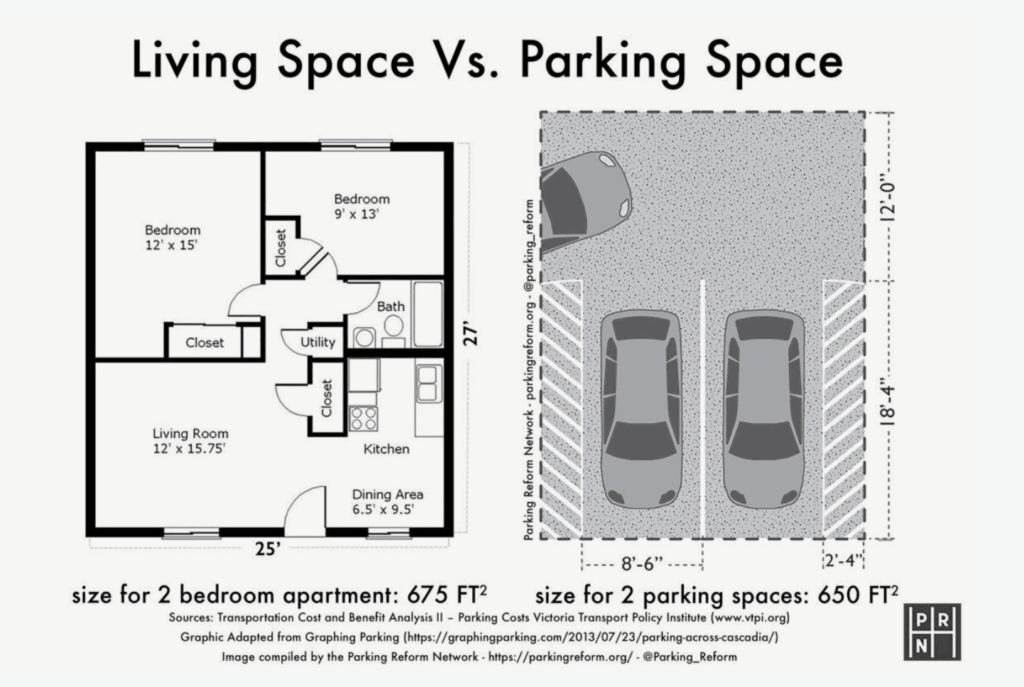What does the high cost of living look like in Rocky Hill? According to our town’s Affordable Housing Plan, about 1 in ten of our neighbors spend more than 30% of their income paying for housing costs. When so much goes towards rent and mortgage, there is less to go towards other essential costs such as transportation, food, healthcare, and childcare, especially for people with lower and middle incomes. The higher the cost of housing, the harder it is for people to move and stay in our town, including older people on a fixed income, and our town’s young people hoping to stay near their families.
Rocky Hill is caught up in the national housing crisis, and many parts of the solution are out of our control. As much as any other town, we are subject to market forces, supply chain disruption, and a stubborn belief that housing is an investment, rather than a human right. That being said, there are steps that local governments can take to address the affordable housing problem.
One set of solutions comes from Strong Towns, a nonprofit organization advocating for a change in the housing mindset that drove post-World War II development in the United States. Strong Towns recently published a “Housing-Ready” checklist which calls for local governments to fill the gap in housing supply with affordable, adaptable, entry-level homes. In this post, I’ll review six actions recommended by Strong Towns and assess whether Rocky Hill meets the criteria proposed. Critically, these steps can not only impact the cost of housing in town; they can also reduce the overall tax burden for residents by growing our Grand List.
1. Allow single-family home conversion to duplex or triplex, by right.
Simplify zoning codes to allow homeowners to create additional housing within existing structures without burdensome approvals.

One way to reduce the cost of housing without having to build “new” homes is to allow single-family homes to be repurposed to allow multiple residents. In these situations, the footprint of the home remains the same, but the interior is redesigned so that multiple groups of people live within a single space. These houses often retain the “look and feel” of the original home. A single, expensive home, split into smaller living spaces, can be made more affordable to an older person seeking to downsize or a younger person looking to get established.
Does Rocky Hill do this?
☐ NO
Our zoning code is currently silent on “conversions” (except when discussing the conversion of office space into residential, which is another great idea). Generally speaking, if an action is not specifically mentioned in the code, it is presumed prohibited.
However, this could change in the near future. Our draft Plan of Conservation and Development (POCD) discusses duplexes and other “multi-family” homes as a way to make housing more affordable. Our Affordable Housing Plan calls upon the town to create more housing options. Both the POCD and the Affordable Housing plans are non-binding documents, so a provision allowing conversions ultimately will need to be adopted by the town’s Planning & Zoning Commission.
2. Permit backyard cottages in all residential zones.
Enable property owners to add accessory dwelling units (ADUs) to increase housing options in established neighborhoods.

Another way to create small, affordable housing is to allow property owners to construct an “accessory dwelling unit” – a small structure (either attached to an existing property or standalone) which provides people with a smaller, and therefore cheaper, living space. These sorts of structures would benefit an elderly parent who wants to live near their children, a younger person who wants a little more independence before moving out. These units could also be rented out, providing affordable housing to the renter and an income stream to the homeowner.
Does Rocky Hill do this?
☑ YES
In 2022, Rocky Hill revised its Zoning Code to permit accessory structures in residential areas. (Zoning Code, Accessory Structures Permitted By Zoning Permit (Staff) Zoning Code pg 36)
3. Legalize starter homes in all residential zones.
Remove zoning restrictions that limit the construction of smaller (400-800 square feet), more affordable homes for first-time buyers and downsizers.

Beginning to see a trend? Not all houses need to be large. Individuals and small groups can benefit from a much smaller footprint. Some municipalities have a minimum limit on housing sizes, which can inhibit developers from supplying housing that meets the needs of a demographic that needs more affordable housing.
Does Rocky Hill do this?
☑ YES
As of 2025, the Rocky Hill zoning code only specifies a maximum housing size: (Zoning Code 3E: Height and Area Requirements, pg 42). Other factors, including state law and the International Residential Code, may make building “tiny homes” complicated. This will be one challenge to navigate if we follow up on our POCD’s call to support tiny homes. However, as a municipality, we’ve already eliminated one of the barriers to creating smaller, more affordable homes.
4. Eliminate minimum lot size requirements in existing neighborhoods.
Allow for more efficient land use by removing artificial barriers that limit the number of homes that can be built.
Building small allows houses to be affordable; building closer together allows us to build more small houses. One factor that may prohibit building housing is a minimum lot size. Most available land in Rocky Hill has already been developed, and conserving open space proved popular when the POCD surveyed town residents. As Strong Towns puts it, removing the minimum lot size comes with financial advantages for the homeowners and the town at large: “For homeowners, it unlocks the potential to create additional housing that meets their needs while remaining affordable. For cities, it brings more properties into productive use, boosting tax revenue without the need for costly infrastructure expansions.” (“The Housing-Ready City”, pg 18).
Does Rocky Hill do this?
☐ NO
| Minimum Size | R-20 | R-40 |
| Interior, Corner, or Through Lot | 20,000 SF (.46 Acres) | 40,000 SF (.92 Acres) |
| Rear Lot | 30,000 SF (.69 Acres) | 60,000 SF (1.38 Acres) |
(Zoning Code 3E: Height and Area Requirements – pg 42)
As of now, the Rocky Hill Zoning Code specifies minimum lot size. Rocky Hill should consider removing this requirement of size, making it possible to create smaller, more densely-packed homes, as illustrated above.
5. Repeal parking mandates for housing.
Let property owners decide how much parking is needed, reducing unnecessary costs and land use requirements.

Mandatory parking spaces require developers to allocate space for parking that could be used for housing. Parking spots are certainly reasonable to build in places further from public transit, and left to their own devices developers may well seek to provide them. But as Rocky Hill seeks to encourage “transit-oriented” development, parking spaces may be unnecessary for a resident who only needs to access a bus or train for the transportation. Rather than require parking spaces through code, developers in Rocky Hill should be free to respond to demand.
Does Rocky Hill do this?
☐ NO
Rocky Hill’s Zoning Code specifies minimum parking for residences. This requirement has gone down over time as state regulations have changed, but there is more still to do.
| Use | Minimum Spaces |
| a. Single-family dwellings | 2.0 spaces in addition to residence requirement |
| b. Multi-family dwellings | 2.0 spaces |
| c. Housing for the Elderly | Not to exceed 1.0 space per studio or one-bedroom unit or 2.0 spaces per two or more –bedroom units. (effective 01-26-22) |
| d. Assisted living facility | 0.60 spaces/living unit. (not to exceed 1.0 space per unit) (effective 01-26-22) |
| e. Active-adult housing | Not to exceed 1.0 space per one-bedroom unit;2.0 spaces per two or more-bedroom units. (effective 01-26-22) |
| f. Customary home occupations | 2.0 spaces in addition to residence requirement |
| g. Accessory apartment | 2.0 spaces in addition to residence requirement |
(Zoning Code 7.B.2: Parking Space Requirements, pg 95)
6. Streamline the approval process.
Create a clear, efficient process to ensure approvals for conversions, cottages and starter homes happen within 24 hours.

Time is money. Developers (and future residents) benefit from a speedy approval process. If Rocky Hill is known as a place where building applications are processed quickly, it makes our town a more attractive place to build. This doesn’t mean that we need to toss out our codes and approve things that we don’t want in town. It just means getting to a result more quickly, even a “no”, is valuable.
Does Rocky Hill do this?
☐ Sometimes
By Zoning Code, new buildings can be approved by staff, and applications can be approved rapidly if all paperwork is in order. This isn’t always possible. For example, by law, building applications that impact wetlands must go to review by our town’s Open Space and Conservation Commission. The Planning & Zoning Commission can be involved in many circumstances (many of which are outlined on page 32 of our Zoning Code).
Whenever items come before a commission, it is encumbent on the town to balance the need for town oversight with the goal of making it easier to build. If, as a town, we provide clear, predictable timelines and reduce unnecessary delays, we can better enable homeowners and developers to contribute to our housing supply.
Rocky Hill can take action to address the housing crisis
Our town’s “Affordable Housing Plan” calls upon municipal policymakers to “explore appropriate opportunities to meet the housing needs of an aging population, and moderate income persons and households.” The Strong Towns checklist provides a number of viable policy options for our Affordable Housing Committee and our Planning & Zoning Commission to consider. Looking forward to our upcoming municipal elections, candidates running for office should explain how they would pursue affordable housing options here in town. Rocky Hill is swept up in the national housing crisis, but there are steps we can take now that make life better for ourselves and our neighbors.
This article reflects the position of the author and not necessarily that of the Democratic Town Committee.


